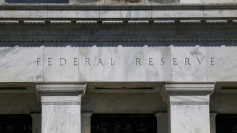The U.S. labor market closed 2024 with an impressive performance, adding 256,000 jobs in December, well above the 155,000 expected by economists. The unemployment rate dipped to 4.1%, a sign of continued strength in a year marked by resilience and recovery.
Data released Friday by the Bureau of Labor Statistics showed that nonfarm payrolls rose substantially from November's revised figure of 212,000. December's gains brought the total number of jobs added in 2024 to 2.2 million, maintaining an average monthly growth rate of 186,000. This aligns with pre-pandemic norms observed from 2017 to 2019 but represents a slowdown from the extraordinary hiring seen during the pandemic recovery years.
"This is a hot report," said Dan North, senior economist for North America at Allianz Trade. "You have to think that [Fed Chair] Jerome Powell is breathing a sigh of relief in the sense that his job just got a little bit easier. Inflation hasn't been moving anywhere for months, so there's no incentive to cut rates."
Friday's report also indicated a decline in the broader unemployment measure, which accounts for discouraged workers and those working part-time for economic reasons. It fell to 7.5%, the lowest level since June 2024. Full-time employment rose by 87,000, while part-time positions increased by 247,000, signaling strong demand across multiple sectors.
The labor force expanded by 243,000 workers, and the labor force participation rate held steady at 62.5%. Average hourly earnings rose 0.3% for the month, matching forecasts, but the 12-month increase of 3.9% fell slightly below expectations. Wage growth, while still above pre-pandemic levels, has moderated, easing fears of wage-driven inflation.
Job gains were led by health care, which added 46,000 positions, followed by leisure and hospitality at 43,000, and government employment at 33,000. Retail rebounded strongly, gaining 43,000 jobs after a loss of 29,000 in November, a shift attributed to seasonal hiring during the holiday shopping period.
While the labor market showed resilience, revisions to previous months reflected a mixed picture. October's numbers were adjusted upward by 7,000 jobs, while November saw a downward revision of 15,000.
Markets reacted sharply to the unexpected strength of the report. Stock futures fell, with Dow Jones Industrial Average futures dropping nearly 400 points before paring losses. Treasury yields surged, as traders recalibrated their expectations for Federal Reserve policy.
"The surprisingly strong jobs report certainly isn't going to make the Fed less hawkish," said Ellen Zentner, chief economic strategist at Morgan Stanley Wealth Management. "All eyes will now turn to next week's inflation data, but even a downside surprise in those numbers probably won't be enough to get the Fed to cut rates any time soon."
The Federal Reserve has cut interest rates by a full percentage point over the past year but signaled a slower pace of reductions going forward. With inflation still above the Fed's 2% target, fueled in part by housing costs and certain goods, the central bank faces a delicate balancing act.
Economists believe the labor market's strength may make it less likely that the Fed will reduce rates at its January meeting. Futures pricing after the jobs report indicated a 68.5% probability of a single rate cut in 2025, according to CME Group's FedWatch gauge.
"The strength of today's December jobs report puts to rest lingering chances of a [quarter-point] cut in January and shifts the focus to the March meeting," said Lindsay Rosner, head of multi-sector fixed income investing at Goldman Sachs Asset Management.
Despite the upbeat report, challenges remain. Long-term unemployment edged higher to an average of 23.7 weeks, the highest since April 2022, though the number of workers unemployed for 27 weeks or more fell by 103,000 to 1.55 million.






